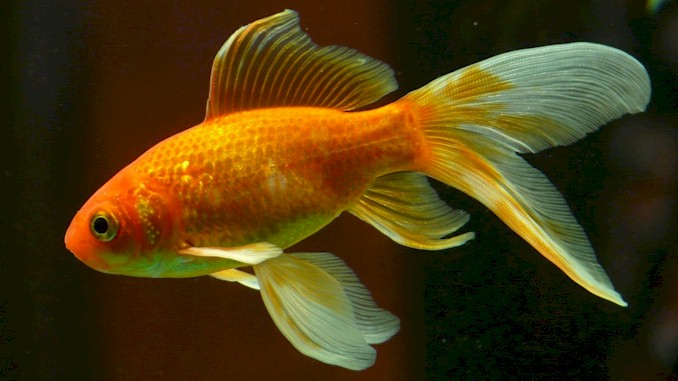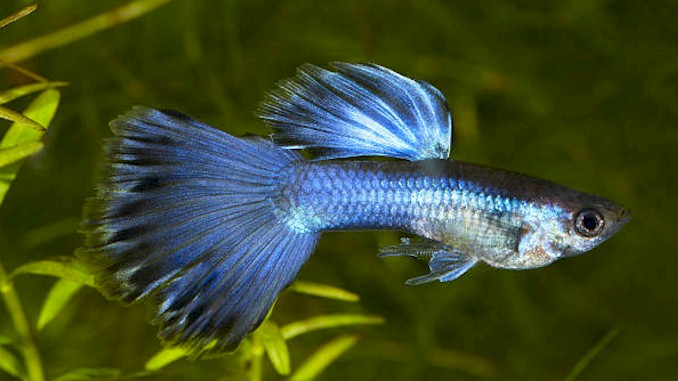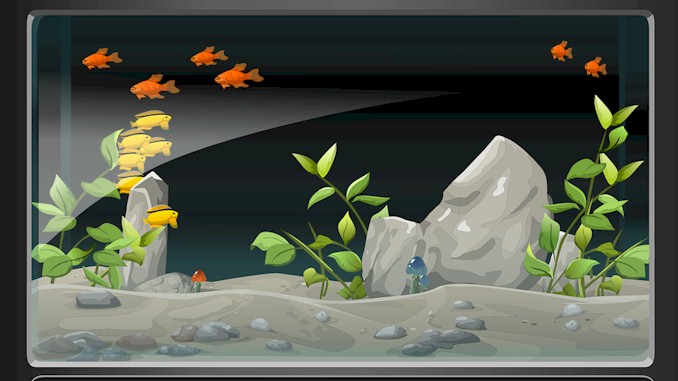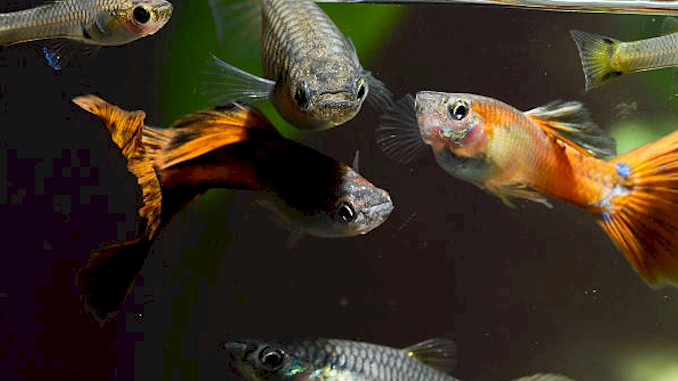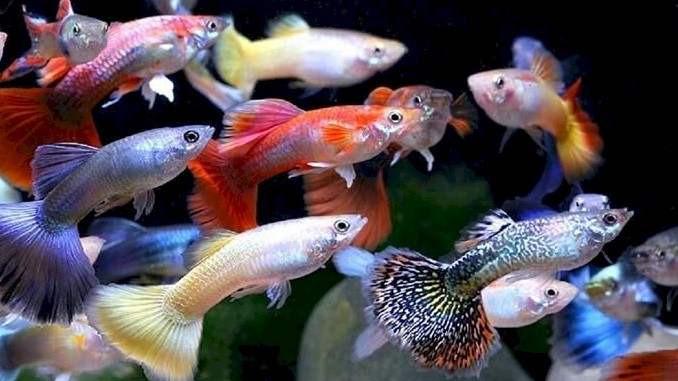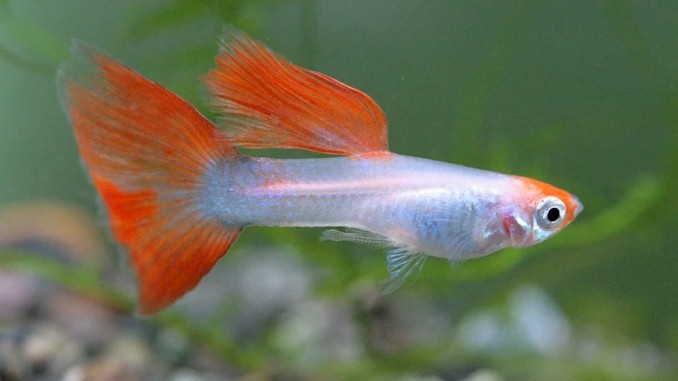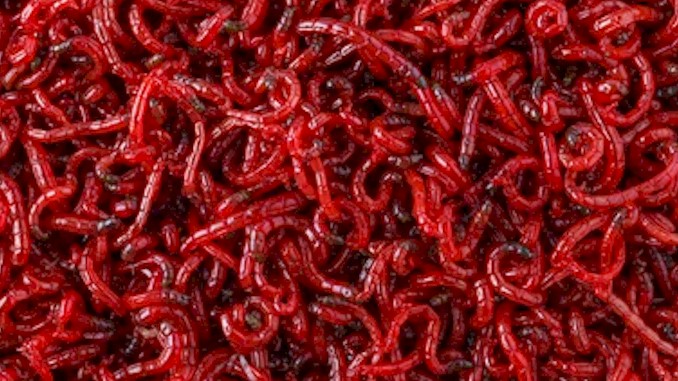Can Guppies Live With Goldfish – A Complete Guide
I’ve always been on the lookout for compatible tank mates for my little aquatic friends. Recently, I found myself pondering whether goldfish would make good companions for guppies. Curiosity got the best of me, so I took to the internet to do some research. Through my extensive research and experience, I got all the necessary information that need to make an informed decision. So, let’s dive in and explore the world of guppies and goldfish.
Guppies (Poecilia reticulata) and goldfish (Carassius auratus) can coexist in the same tank under certain conditions, such as compatible water parameters, adequate tank size, and proper feeding. However, they belong to different families. So there are some challenges, such as different temperature preferences, potential predation, and disease transmission.
However, the answer to the question “Can guppies live with goldfish?” is not as straightforward as a simple yes or no. There are various factors to consider, such as tank size, filtration system, and temperament of the fish. In the following sections, I will discuss these factors in detail and provide you with valuable insights and tips on how to successfully keep guppies and goldfish in the same tank. So, if you’re interested in learning more about this topic and want to make the most informed decision possible, keep reading!
Why Do You Want to Keep Guppies and Goldfish Together?
You may have different reasons for wanting to keep guppies and goldfish together in your aquarium. Maybe you like their colorful appearance, their peaceful temperament, their pest-eating habits, or their easy care. Or maybe you just want to try something new and experiment with different combinations of fish. Whatever your motivation is, you should know that keeping guppies and goldfish together is possible, but not without some challenges and risks.
In this section, I will explain some of the benefits and drawbacks of keeping guppies and goldfish together, as well as some tips on how to make it work. I will also share some personal anecdotes from my own experience of keeping these two fish species in the same tank.
Benefits of Keeping Guppies and Goldfish Together
One of the main benefits of keeping guppies and goldfish together is that they are both peaceful fish that can coexist without fighting or harassing each other. They have similar social behaviors and can form schools or shoals with each other. They also have overlapping water parameters, such as pH, hardness, and ammonia levels, which means you don’t have to adjust them too much for either species.
Another benefit of keeping guppies and goldfish together is that they can help control pests in your aquarium. Both fish love to eat mosquito larvae, snails, hydra, algae, and other unwanted organisms that can harm your plants or water quality. By having guppies and goldfish in your tank, you can reduce the need for chemical treatments or manual removals of pests.
A third benefit of keeping guppies and goldfish together is that they can add beauty and variety to your aquarium. Guppies are known for their vibrant colors and patterns, while goldfish come in many shapes and sizes. You can mix and match different types of guppies and goldfish to create a stunning display of colors and forms. You can also choose different plants and decorations to complement their appearance.
Drawbacks of Keeping Guppies and Goldfish Together
Despite these benefits, there are also some drawbacks of keeping guppies and goldfish together that you should be aware of. One of the biggest drawbacks is that they have different temperature preferences. Guppies are tropical fish that like warm water between 72°F (22°C)and 82°F (28°C), while goldfish are coldwater fish that prefer cooler water between 65°F (18°C)and 75°F (24°C). If you keep them in the same tank, you will have to compromise on a temperature that is not ideal for either species, which can affect their health and lifespan.
Another drawback of keeping guppies and goldfish together is that they have different dietary needs. Guppies are omnivorous fish that need a balanced diet of plant-based foods (such as flakes or pellets)and animal-based foods (such as brine shrimp or bloodworms). Goldfish are herbivorous fish that need mostly plant-based foods (such as algae wafers or fresh vegetables)and occasional animal-based foods (such as daphnia or tubifex worms). If you feed them the same food, you may overfeed one species or underfeed another, which can cause obesity or malnutrition.
A third drawback of keeping guppies and goldfish together is that they have different growth rates. Guppies are small fish that grow up to 2 inches (5 cm)in length, while goldfish are large fish that can grow up to 12 inches (30 cm)or more in length. If you keep them in the same tank, you may face problems such as overcrowding, competition for food or space, or predation. Goldfish may eat smaller guppies if they fit into their mouths, while guppies may nip at the fins or scales of larger goldfish if they feel threatened.
Tips on How to Keep Guppies and Goldfish Together
If you still want to keep guppies and goldfish together despite these drawbacks, you will need some tips on how to make it possible. Here are some suggestions based on my own experience:
- Choose a large tank with enough space for both species. A general rule is to provide at least 10 gallons (38 liters)of water per adult goldfish, and at least 1 gallon (4 liters)of water per adult guppy.
- Choose compatible types of guppies and goldfish that have similar sizes and temperaments. For example, you can pair fancy guppies with fancy goldfish, such as orandas, ryukins, or fantails. Avoid pairing common guppies with common goldfish, such as comets or shubunkins, as they are more active and aggressive.
- Choose a moderate temperature that is comfortable for both species. A range between 70°F (21°C)and 74°F (23°C)is usually acceptable for both guppies and goldfish. You can also use a heater and a thermometer to monitor and adjust the temperature as needed.
- Choose a balanced diet that meets the nutritional needs of both species. You can feed them a high-quality flake food that contains both plant and animal ingredients. You can also supplement their diet with live or frozen foods, such as brine shrimp, bloodworms, daphnia, or tubifex worms. You can also offer them fresh vegetables, such as lettuce, spinach, cucumber, or zucchini. Make sure to feed them in small amounts and remove any uneaten food after 5 minutes to prevent water pollution.
- Choose suitable plants and decorations that provide hiding places and enrichment for both species. You can use live plants, such as java ferns, anubias, or hornwort. You can also use artificial plants or ornaments that are safe for fish. Avoid using sharp or rough objects that can injure your fish.
- Perform regular water changes and maintenance to keep the water quality high for both species. You should change at least 25% of the water every week using a gravel vacuum and a bucket. You should also test the water parameters regularly using a test kit or strips. You should aim for these values: pH: 7-8; ammonia: 0 ppm; nitrite: 0 ppm; nitrate: <20 ppm; hardness: 10-20 dGH; alkalinity: 100-200 ppm.
Personal Anecdotes from Keeping Guppies and Goldfish Together
I have been keeping guppies and goldfish together for about two years now, and I have learned a lot from this experience. Here are some of my personal anecdotes:
- I started with a 20-gallon (76-liter)tank with four fancy guppies and two fancy goldfish (one fantail and one ryukin). I chose these types because they are small, peaceful, and colorful. I decorated the tank with live plants, a driftwood, and a ceramic castle.
- I set the temperature at 72°F (22°C), which seemed to be fine for both species. I fed them twice a day with flake food, and once a week with frozen brine shrimp or bloodworms. I also gave them lettuce leaves or cucumber slices occasionally.
- I noticed that the guppies and goldfish got along well with each other. They formed schools or shoals sometimes, and they did not fight or chase each other. They also helped me control pests in my tank, such as snails or algae.
- I also noticed some challenges of keeping guppies and goldfish together. One challenge was that the goldfish grew faster than the guppies, and they started to outcompete them for food or space. I had to upgrade my tank to a 40-gallon (151-liter)one after six months to accommodate their growth.
Another challenge was that the guppies bred faster than the goldfish, and they produced many fry in my tank. Some of these fry were eaten by the goldfish, but some survived and added to the bioload of my tank. I had to give away some of my guppies to friends or pet stores to reduce overcrowding.
A third challenge was that the guppies were more prone to diseases than the goldfish, such as fin rot or ich. I had to treat them with medications sometimes, which could harm my plants or beneficial bacteria in my tank.
Conclusion
Keeping guppies and goldfish together is not impossible, but it is not easy either. You need to consider their different needs and preferences, as well as their potential problems and risks.
If you decide to keep them together, you need to follow some tips on how to make it work, such as choosing compatible types of fish, choosing moderate water parameters, choosing balanced diets, choosing suitable plants.
How to Adjust the Water Parameters for Guppies and Goldfish?
When it comes to adjusting the water parameters for guppies and goldfish, it’s important to understand the specific needs of each species. Here are some tips for adjusting the water parameters for guppies and goldfish:
- Temperature: Guppies prefer warmer water with temperatures between 75-82°F, while goldfish prefer cooler water with temperatures between 65-75°F. If you’re keeping both species in the same tank, it’s important to find a temperature range that works for both. Consider using a heater to maintain a consistent temperature in the tank.
- pH: Guppies prefer slightly acidic to neutral water with a pH range of 6.8-7.8, while goldfish can tolerate a wider range of pH levels between 6.0-8.0. If your tank’s pH is too high or too low, you can adjust it by adding pH adjusters or using natural methods like adding driftwood or Indian almond leaves to the tank.
- Hardness: Guppies prefer soft to moderately hard water with a range of 5-20 dGH, while goldfish prefer moderately hard to hard water with a range of 8-12 dGH. You can adjust the water hardness by adding mineral supplements or using reverse osmosis water.
- Ammonia and Nitrite levels: Both guppies and goldfish are sensitive to high levels of ammonia and nitrites, which can be toxic to them. To maintain healthy water parameters, it’s important to perform regular water changes and use a high-quality filter to remove excess waste and toxins from the tank.
- Chlorine and Chloramine: Tap water may contain chlorine or chloramine, which can be harmful to fish. Be sure to treat tap water with a water conditioner to remove these chemicals before adding it to the tank.
By adjusting the water parameters to meet the specific needs of guppies and goldfish, you can create a healthy and thriving environment for both species in the same tank. It’s important to monitor the water parameters regularly and make adjustments as needed to ensure the health and wellbeing of your aquatic pets.
How to Choose the Right Tank Size for Guppies and Goldfish?
Choosing the right tank size for guppies and goldfish is important to ensure that they have enough space to swim, thrive and maintain healthy water parameters. Here are some factors to consider when choosing the right tank size for guppies and goldfish:
- Number of fish: The number of fish you plan to keep will determine the size of the tank you need. Guppies are small and can be kept in groups of 5-10 in a tank as small as 10 gallons. Goldfish, on the other hand, require much more space and should be kept in a tank that is at least 20-30 gallons for a single fish, and an additional 10-20 gallons for each additional goldfish.
- Size of fish: The size of the fish also plays a role in determining the tank size. Adult goldfish can grow up to 8-12 inches in length, so they need a lot of space to swim. Guppies, on the other hand, are much smaller and only grow up to 2 inches in length.
- Filtration: A larger tank with a high-quality filter can help maintain better water quality, which is important for the health of your fish. A larger tank will also provide more space for beneficial bacteria to grow and help keep the water clean.
- Decorations: If you plan to add decorations to the tank, such as plants or rocks, this can take up additional space and reduce the swimming area for your fish. Make sure to factor in the space that decorations will take up when choosing the tank size.
- Future growth: If you plan on adding more fish to your tank in the future, it’s important to choose a tank size that can accommodate their growth. It’s better to plan ahead and choose a larger tank than to have to upgrade later on.
In summary, when choosing the right tank size for guppies and goldfish, consider the number and size of fish, filtration, decorations, and future growth. A larger tank with a high-quality filter will provide a healthier and more spacious environment for your fish to thrive.
How to Feed Guppies and Goldfish Properly?
Feeding guppies and goldfish properly is essential for their overall health and well-being. Here are some tips for feeding your fish:
- Choose the right food: Guppies and goldfish have different dietary needs, so it’s important to choose the right type of food for each species. Guppies are omnivores and require a diet that includes both plant and animal matter, while goldfish are primarily herbivores and require a plant-based diet.
- Feed in moderation: Overfeeding can lead to health problems, such as obesity and digestive issues. It’s important to feed your fish in moderation and only give them the amount of food they can consume in a few minutes. As a general rule, feed your fish once or twice a day.
- Avoid over-processed foods: Processed foods can be high in preservatives and other additives that are not beneficial for your fish. Look for high-quality, natural foods that are specifically designed for guppies or goldfish.
- Variety is key: Offering a variety of foods can help ensure that your fish are getting all the nutrients they need. For example, you can feed your guppies a combination of flakes, pellets, and freeze-dried or frozen foods such as brine shrimp or bloodworms. For goldfish, you can offer a variety of fresh vegetables such as spinach, peas, and lettuce, as well as specialized pellets or flakes.
- Clean up excess food: Any leftover food in the tank can contribute to poor water quality and should be removed promptly. Use a net or siphon to remove any uneaten food from the tank.
In summary, feeding guppies and goldfish properly involves choosing the right type of food, feeding in moderation, avoiding over-processed foods, offering a variety of foods, and cleaning up excess food. By following these tips, you can help ensure that your fish are getting the nutrients they need to stay healthy and thrive.
How to Prevent Predation and Disease Transmission Between Guppies and Goldfish?
Predation and disease transmission can be a concern when keeping guppies and goldfish together. Here are some tips for preventing these issues:
- Quarantine new fish: Whenever you introduce new fish to your tank, it’s important to quarantine them for a period of time to ensure that they are healthy and not carrying any diseases that could spread to your existing fish.
- Keep an eye out for signs of disease: Watch your fish for signs of illness, such as changes in behavior or appearance. If you notice any signs of disease, isolate the affected fish immediately and treat them accordingly.
- Maintain good water quality: Poor water quality can weaken fish and make them more susceptible to disease. Regularly test the water in your tank and perform water changes as needed to maintain optimal water conditions.
- Provide hiding places: Guppies are smaller and more vulnerable than goldfish, so it’s important to provide them with plenty of hiding places in the tank. This will help them avoid being preyed upon by larger fish.
- Separate aggressive fish: If you notice that a particular fish is attacking or harassing others in the tank, separate it immediately to prevent further damage.
- Consider separate tanks: If predation and disease transmission continue to be a problem despite your best efforts, it may be best to keep guppies and goldfish in separate tanks to ensure the health and safety of both species.
By following these tips, you can help prevent predation and disease transmission between guppies and goldfish, and ensure that your fish remain healthy and happy in your tank.

